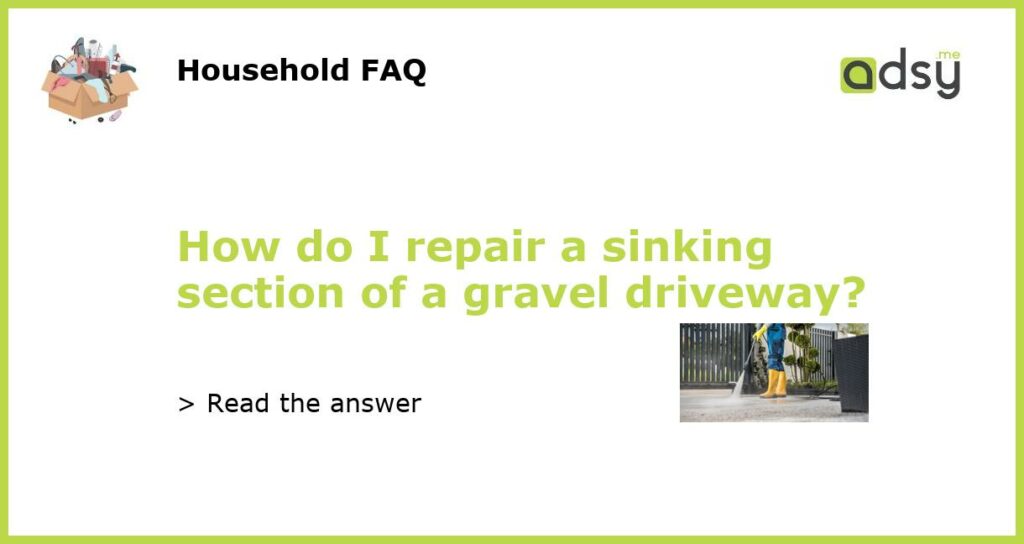Causes of a sinking section in a gravel driveway
A sinking section in a gravel driveway can be caused by several factors, including poor drainage, erosion, heavy usage, or a weak foundation. Understanding the cause of the sinking section is essential for determining the appropriate repair method. Here are some common causes:
- Poor drainage: If water consistently pools in a particular area of the driveway, it can weaken the foundation and cause sinking.
- Erosion: Over time, erosion can wash away the gravel and create a depression in the driveway.
- Heavy usage: If a specific area of the driveway is frequently used, such as for parking or turning vehicles, it can compact the gravel and cause sinking.
- Weak foundation: If the driveway was not properly constructed with a solid base, it can lead to sinking sections.
Determine the extent of the sinking
Before starting the repair process, it is important to assess the extent of the sinking section. This will help determine the necessary steps and materials needed for repair. Here’s how to determine the extent of the sinking:
- Use a measuring tape to measure the depth of the sinking section. This will help in determining the amount of gravel needed for the repair.
- Inspect the surrounding areas for signs of damage or additional sinking. This will help identify any underlying issues that need to be addressed.
Repairing a sinking section in a gravel driveway
Once you have determined the cause and extent of the sinking section, you can proceed with the repair process. Here are the steps to repair a sinking section in a gravel driveway:
- Remove the existing gravel from the sinking section. Use a shovel to carefully scoop out the gravel and transfer it to a wheelbarrow or another designated area. Be sure to set aside the gravel for later use.
- Inspect the foundation of the sinking section. If the foundation is weak or damaged, you may need to reinforce it with additional materials such as crushed stone or compacted soil. This will provide a stable base for the new gravel.
- Add gravel to the sinking section. Start by adding a layer of gravel and compact it firmly using a tamper or plate compactor. Repeat this process until the sinking section is level with the rest of the driveway. Ensure that the added gravel is of the same size and quality as the existing gravel.
- Compact the entire repaired section. Once the sinking section is filled with gravel, use a tamper or plate compactor to firmly compact the entire repaired area. This will ensure that the new gravel is tightly packed and will not sink again.
- Spread a layer of new gravel on top of the repaired section. This will help blend the repaired area with the rest of the driveway and provide a smoother surface.
Preventing future sinking sections
To prevent future sinking sections in your gravel driveway, it is important to address the underlying causes and take preventive measures. Here are some tips:
- Improve drainage: Ensure that your driveway has proper drainage to prevent water from pooling. Consider installing a French drain or adding gravel or pebbles to divert the water away from the driveway.
- Address erosion: If erosion is causing sinking sections, consider adding landscaping features such as retaining walls or installing erosion control measures, such as geotextile fabric, to stabilize the soil.
- Limit heavy usage: If certain areas of the driveway experience heavy usage, consider adding additional support such as concrete aprons or reinforced gravel to prevent sinking.
- Maintain the driveway regularly: Regularly inspect and maintain your gravel driveway to identify and address any potential issues before they become major problems.
Seek professional help if needed
While repairing a sinking section in a gravel driveway can be a DIY project, it may require professional help, especially if the sinking is extensive or if you are uncertain about the underlying issues. Consulting a professional contractor or driveway repair specialist can ensure a thorough assessment and appropriate repair solutions.

